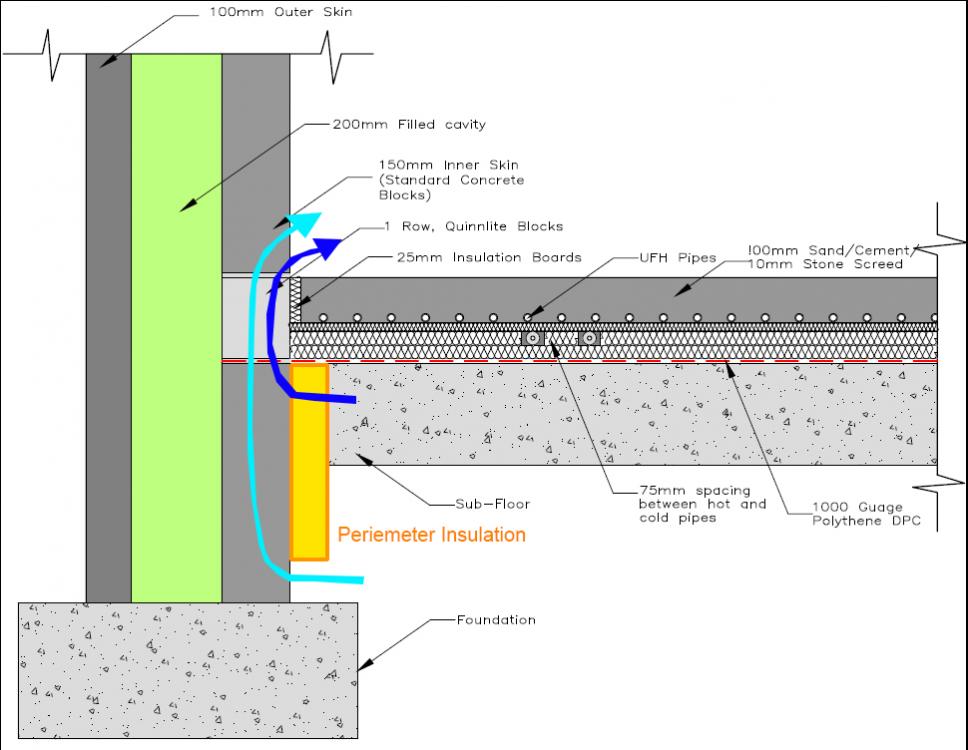Leaderboard
Popular Content
Showing content with the highest reputation on 03/01/17 in all areas
-
This is another area which is a bit of a minefield of varying costs In the last place we fitted Crosswater valves, they were expensive but very very good quality. http://www.tapwarehouse.com/product/DE2000RC?gclid=CNvy_qHltNICFUG4Gwodn5YNrA I know I am a cynic but are eBay seller ratings really a guide of product quality? Ratings are generally left within weeks of purchase which gives no guide to longer term reliability? Also any guarantee offered by an eBay seller is all but worthless as I can't see how you have any redress through eBay or PayPal beyond your claim period (90days?) I might be wrong though? As Nick said buying 2 or 3 is I guess an option for spares. Personally if I see something on eBay which is by a large seller I look to see if they have a traditional web store. If they are selling the item for significantly less on eBay then I start to ask the question "why?". Yes it could be old stock but then equally I know owners of companies that get rid of "problem" stock through eBay as the chances of recourse are significantly reduced. If the price is similar then I will always buy through the standard web shop, proper invoice, direct sale, credit card purchase. As an example this would appear to be exactly the same item Nick linked to from the same company: http://www.betterbathrooms.com/showers/shower-valves/ecos9-concealed-triple-control-shower-valve-with-diverter As I said perhaps I'm just a cynic and wary of evilbay2 points
-
I've bought a lot of stuff off eBay and may have just been lucky, but my experience has been pretty good tbh. I bought some shitty LED lights once, but after getting annoyed with them, ( and then connecting them up to the mains just to watch them die ), I bought some replacements and was back in business. High 'ranking' sellers mean they've been in business for a good while, so is a reasonable measure of their character. Negative feedback can be viewed to affirm or remove that confidence. The fleas come with the dog so buy unfamiliar stuff and take your chances, but the BetterBathrooms one I'm pretty sure is the one I've got. Still going strong and gets a hammering in my house.1 point
-
1 point
-
Lift up the breather paper, tuck up and staple some 225mm DPC to the sheathing and drape over the horizontal batten. Even without weep holes, any water will be trapped between the render board and the DPC and will eventually find its way down the sides.1 point
-
To be honest, once you get down to low heat energy input levels it doesn't much matter what you use to get that heat energy. In our case, the additional overall cost of an E7 electricity tariff here makes it pointless, we're better off using the lowest standing charge standard tariff. We find that the input power to our ASHP rarely exceeds about 800W, and then only for an hour or so every couple of days, and most of the time it's on for that hour or so it's only drawing around 400W. The cost is so low as to be less than the cost of running things like the sewage treatment plant air pump and the UV water disinfection unit we have. Hot water is far and away the highest energy demand, far greater than heating the house, and it was a challenge to come up with a reasonable compromise. I've concluded that once you get down to only needing such a low level of heating, it makes more sense to separate out hot water system design from the heating system design, because they have such differing requirements.1 point
-
Indeed, I suppose it depends how you intend to run your heating. If you use the ASHP to heat a large Store up to a particular temp you will be running your ASHP at night and then calling for heat from the store during the day. There are so many variables that its hard to know what is the best way to go.1 point
-
Well, I don't really know!!! I have not done a PHPP, originally I was going with 300mm of EPS but because of ground conditions, my reluctance to pay over the odds for a structural engineer to design a passive slab and being impressed with the Golcar passive house foundation design I decided to do it this way. I confess to being a bit of a Luddite, I know I am building in a very mild part of the country ( if a bit damp) . There are many on this forum who are whizzes at maths and will know exactly what their U value will be but I firmly believe that micro climate can affect what actual temps you get more than all the maths can evaluate. Jeremy,s build is a good example, because of his very sheltered location it turned out that cooling was a bigger issue than heating. Some will say I am mad but whatever, all I know is my heating will cost far less than A.N.Other house.1 point
-
thickness (mm) W/m K m2 K/W u value PIR 125 0.022 5.681818 0.176 screed 100 0.41 0.243902 5.925721 0.168756 PIR 150 0.022 6.818182 0.146667 screed 75 0.41 0.182927 7.001109 0.1428351 point
-
1 point
-
1 point
-
PIR can be as low as 0.018W/m.K eg Kingspan K103 floor insulation. I've had to use it in our refurb where I'm keeping the sub floor in areas and still want to retain the existing sub floor and not increase floor levels. In addition if you're renovating you obviously can't install aerated or Quinnlite blocks in a wall so another trick to reduce the thermal bridge is to put vertical perimeter insulation where you're removing the sub floor and hardcore. It increases the distance for the cold to transfer thus reducing the thermal bridge.1 point
-
It's the way our slab's laid, and works well. We have a layer of reinforcing steel fabric on 50mm chairs, so at the mid-point in the 100mm thick slab. The UFH pipes are on top of this, so are closer to the top than the bottom (the top of the pipes is around 34mm from the surface of the slab), which improves the response time slightly and also reduces the losses slightly. The thermal conductivity of concrete is pretty close to that of water, so pretty high, and the heat capacity of concrete is a lot less than water, so in practice heat travels from the water in the pipes to the surface of the slab quite quickly. There will still be a temperature gradient both ways when the systems running, with the centre of the pipe being the highest temperature and the temperature dropping the further away from that you go in the slab. If the pipes were at the bottom, then the losses would increase slightly, as the hottest part would be further away from where you want the heat delivered, and closer to the place you don't want the heat to go, the ground underneath. No insulation is perfect, there will always be heat lost through it whenever there is a temperature difference from one side to the other, and the key thing here is that the higher the pipes are in the slab the lower the temperature of the slab will be at the bottom, which is a good thing overall.1 point
-
This one looks identical to mine, so maybe just gone up in price a bit. Decent seller and good statistics.1 point
-
One similar And another Check out the related viewed items when you scroll down the Ebay page and you'll see others from different sellers, round and square etc. I can't get the one I bought up as Ebay purchase history doesn't go back far enough ( mine was fitted just before Xmas 2014 ). I can't say if any of the above linked items will serve you well, but check the feedback and % of the sellers as 19,000 sales and above 90% positive feedback is half about. Mine is still going strong, and I've no complaints but remember that I've kept back a dozen tiles and can change this over a weekend if needs be. My only word of caution is of you stray from a well known make, you'll maybe struggle for spares later down the road. For the £90 though, you can afford to buy two and have one for spares. Also, these valves are fully demountable ( not fully removable ) from the front plate inwards ( which you remove to gain access to the innards ) so you can easily swap out a failed part IF you have / can get one. Hope that helps. ?1 point
-
Solar panels that match your roof covering... http://www.curbed.com/2017/2/28/14756846/solar-panels-roof-design-sistine-solar1 point
-
Sorry guys Iv Just got back from Bulgaria and I am in no fit state to do much. That makita looks to be a decent price but also looks a bit flimsy IMHO. we use an older 110v volt version of this for work and i have been very impressed with the build quality, https://www.its.co.uk/pd/MLT100X-Makita-Table-Saw-with-Stand-_MAKMLT100X.htm?gclid=CjwKEAiA3NTFBRDKheuO6IG43VQSJAA74F77TuGAy8PLMjs1D3OLfEBYj8DmDeTL-fv9PnyiHIiMwBoCY7jw_wcB I suppose it all depends how much you are planning to move it around. Edit: Looks like this is the actual model......possibly a bit on the pricey side.... http://www.ebay.co.uk/itm/Makita-2704-110v-260mm-Table-Saw-/351926088792?hash=item51f06df458:g:uCQAAOSw2xRYV~j71 point
-
When I Googled, other local authorities have quite detailed regulation, by my LA has zero. I guess the correct term should be "main entrance" and we are just used to saying front door front the traditional British view. Like my main property, I moved the front door from round the side to give the house a front door, and even though electric gates prevent posty delivering to the door, we still had a letter box fitted ....just because!!!!1 point








